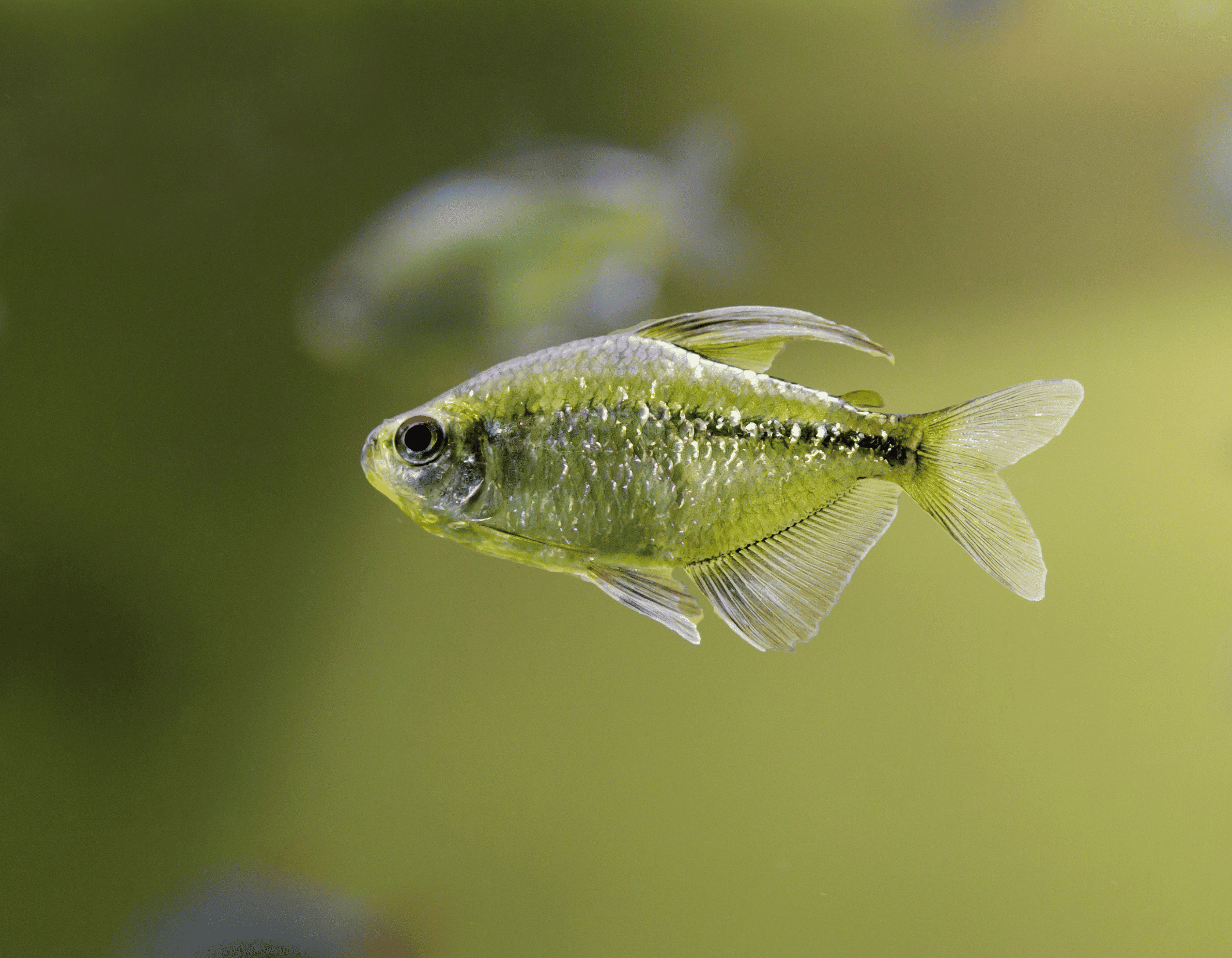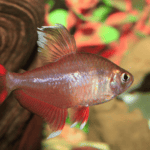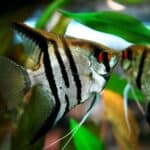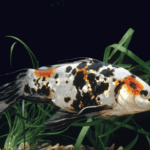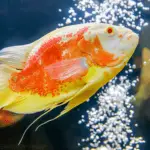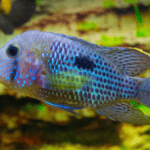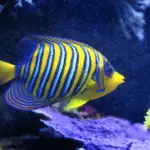Diamond Tetras (Moenkhausia pittieri) are stunning freshwater fish, renowned for their shimmering scales and captivating iridescence. Originating from South America, these beautiful tetras offer a mesmerizing display within any aquarium setting. As a relatively hardy and adaptable species, they are well-suited for both novice and experienced aquarists alike.
Naturally found in the warm waters of Venezuela, Diamond Tetras are a schooling fish species that thrive in a well-planted tank environment. Their peaceful temperament and ease of care make them a popular choice for community aquariums. With vibrant colors, a distinct appearance, and an engaging social behavior, Diamond Tetras bring a dynamic energy to any aquatic setup.
Key Takeaways
- Diamond Tetras are attractive, iridescent fish with a peaceful temperament.
- Native to South America, they thrive in well-planted, warm-water aquariums.
- Suitable for both beginners and experienced aquarists, they make a great addition to community tanks.
Natural Habitat and Origin
The Diamond Tetra (Moenkhausia pittieri) is a beautiful, small freshwater fish originating from South America. In their natural habitat, they can be predominantly found in the waters of Lake Valencia and surrounding streams in Venezuela. Although this species can also be found in some rivers within the Amazonian biotope, their primary habitats are Lake Valencia, Rio Bue, and Rio Tiquiriti.
We can observe distinctive features of their habitats, such as slow-flowing streams or clear rivers, where the water is warm with a slightly acidic pH. These areas are densely vegetated with a wide variety of aquatic plants and often feature areas with leaf litter and driftwood. Diamond Tetras thrive in such environments, which provide adequate hiding spots to protect them from predators.
One of the critical aspects of their natural environments is the dim and subdued lighting, mostly due to the dense vegetation cover. This is vital for their well-being and the development of their iridescent scales. These shimmering scales, appearing like small diamonds, serve as both an attractive feature and a camouflage tactic to blend in with the dappled light created by the foliage.
In conclusion, the Diamond Tetra’s natural habitat is predominantly focused around the well-vegetated waters of Lake Valencia, Rio Bue, and Rio Tiquiriti in South America. A thriving habitat consists of warm, slightly acidic waters with subdued lighting, and dense vegetation including plants, leaf litter, and driftwood. Understanding and replicating these conditions will allow us to best cater to the needs of these elegant and fascinating fish in our own aquariums.
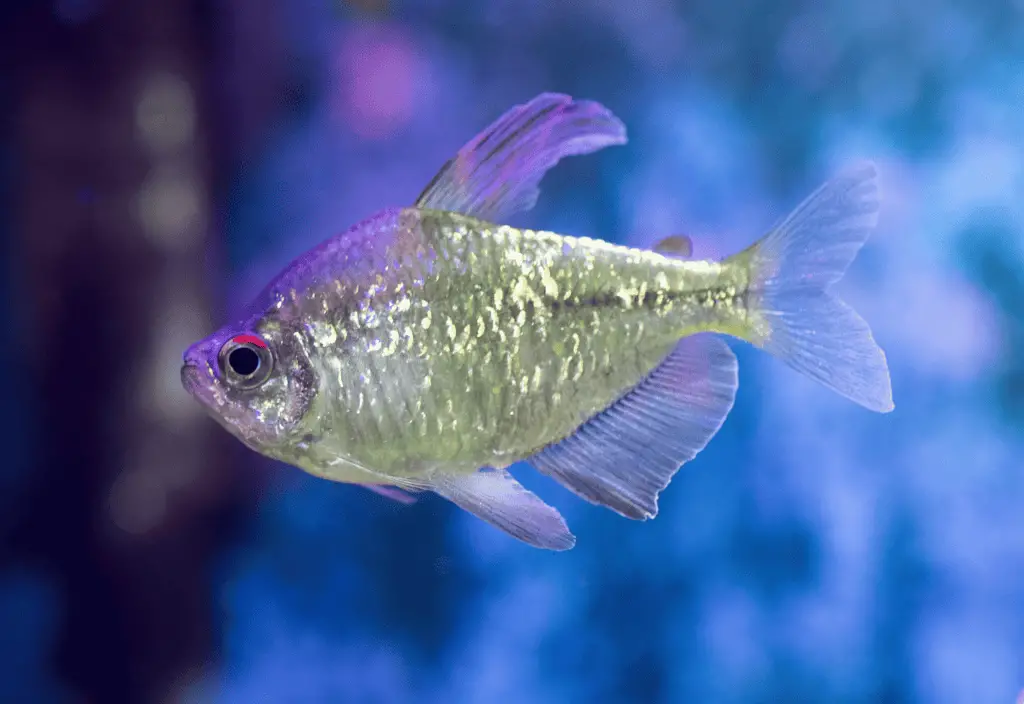
Appearance and Identification
Diamond Tetras, also known as Diamond Characins or Pittier’s Tetras, are small, eye-catching fish, which can be easily identified due to their striking features. In this section, we will discuss the various aspects of their appearance that make these fish unique.
Their body colors mainly range from blue to green, creating an iridescent effect that looks mesmerizing under the right lighting. When these tetras mature, a beautiful gold or orange hue can be observed on their body, enhancing their overall attractiveness. The size of a Diamond Tetra usually varies between 2 to 2.5 inches in length.
One of the distinguishing features of Diamond Tetras is their fins. The anal and dorsal fins of these fish are broad and well-developed, contributing to their agility and swimming capabilities. The dorsal fins have a slightly pointed shape which, along with the other fins, display a vibrant mix of blue, green, and orange shades.
The anal fin extends almost halfway to the caudal fin and often exhibits a black stripe, adding to the fancy appearance of these amazing fish. Diamond Tetras are known for their characteristic diamond-like scales that shimmer when light reflects on them, giving them their well-suited name.
In summary, Diamond Tetras boast a unique combination of colors, fins, and iridescent scales that make them a popular choice among hobbyist aquarists. Their charming appearance is sure to captivate anyone who has the pleasure of observing these gorgeous Tetras.
Related: All About the Rummy Nose Tetra: Care, Setup, Diet, Breeding & More
Behavior and Temperament
When discussing Diamond Tetras, it’s important to note their peaceful temperament. As community fish, they are both active and social creatures, making a brilliant addition to any aquarium.
Throughout the day, we can observe that Diamond Tetras are quite active, preferring to swim within the middle of the water column. They thrive when they’re part of a school of six or more individuals; this creates a sense of security and results in a harmonious environment.
In terms of social behavior, our Diamond Tetras interact rather well with several other species that share similar characteristics, such as peacefulness and comparable size. However, it is essential to ensure that aggressive or predatory fish are kept separate to prevent any potential conflicts or harm.
To summarize, the behavior and temperament of Diamond Tetras are what make them ideal for many aquarium enthusiasts. Their peaceful nature, active lifestyles, and social interactions create a visually appealing and lively ambiance in a community tank.
Tank Mates and Compatibility
When it comes to selecting tank mates for Diamond Tetras, it is important for us to consider fish that are peaceful, of similar size, and exhibit non-aggressive behaviors. We recommend fish such as danios, guppies, and corydoras catfish as they tend to be compatible tank mates for Diamond Tetras.
Danios are known to be quite hardy and adapt well to various water conditions. They are active swimmers, which makes them enjoyable to watch, and they usually don’t exhibit aggressive behaviors towards other fish. Additionally, they have a similar size to Diamond Tetras, making them a suitable tank mate choice.
Guppies, another popular choice, are colorful, peaceful, and easy to care for. They are generally compatible with many other small, non-aggressive fish, including Diamond Tetras. They have a similar size and temperament, which makes them a great addition to your Diamond Tetra community tank.
Corydoras catfish appreciate a peaceful environment just like Diamond Tetras. These bottom-dwelling catfish are not only compatible but also beneficial to the tank. They are known to keep the substrate clean by feeding on leftover bits of food, contributing to the overall well-being of the aquarium.
Aside from danios, guppies, and corydoras catfish, there might be other suitable tank mates that can coexist harmoniously with Diamond Tetras, such as other species of tetras, smaller rainbowfish, or certain types of rasboras. It is important for us to always research potential tank mates before introducing them to the aquarium to ensure a happy and stress-free environment for our Diamond Tetras.
Aquarium Setup and Maintenance
Setting up an aquarium for Diamond Tetras requires careful planning and attention to details. To ensure that the living environment is safe and comfortable for these beautiful fish, we need to consider the tank size, filtration, and the overall Amazonian biotope setup.
A key factor when setting up an aquarium for Diamond Tetras is the tank size. We recommend a minimum tank size of 20 gallons as an ideal starting point. This provides ample space for these active swimmers to move around freely and display their natural behaviors.
Incorporating live plants and driftwood is essential in replicating the Amazonian environment for these Tetras. We can use plants such as Amazon Swords, Java Ferns, and Anubias to create a natural and dense setup. Driftwood branches can be placed strategically, providing shelter and hiding spots for the fish to rest and feel secure.
Filtration is extremely important in maintaining a healthy aquarium. A high-quality filter with a moderate flow rate is necessary to keep the water clean and clear. As Diamond Tetras prefer softer water, using a peat-based filtration media can help create an appropriate environment for them. Regular water changes, at least 20-30% weekly, are essential to prevent the build-up of harmful substances.
An Amazonian biotope setup requires maintaining specific water parameters that mimic their natural habitat. We should aim for the following optimal parameters:
- Temperature: 72-82°F (22-28°C)
- pH level: 6.0-7.5
- Water hardness: 5-12 dGH
Monitoring these parameters regularly and adjusting as needed is crucial for the well-being of Diamond Tetras.
In conclusion, careful planning and maintenance are essential in setting up a thriving aquarium for Diamond Tetras. By adhering to these guidelines, we can create a beautiful and healthy environment for these stunning fish to thrive in.
Water Parameters and Conditions
In our fishkeeping experience, maintaining the optimal water parameters and conditions is crucial for Diamond Tetras’ health and well-being. We find it essential to regularly check and adjust the different aspects of the water, which we will outline below.
The appropriate water temperature for Diamond Tetras ranges between 72-82°F (22-28°C). Maintaining a stable temperature within this range is important, as drastic temperature fluctuations could cause stress and other health issues for the fish.
Regarding water hardness, Diamond Tetras prefer soft to moderately hard water with a hardness level between 2 and 15 dGH. As for the pH level, these tetras thrive in an environment with a pH range of 5.5 to 7.5. This slightly acidic to neutral range allows them to exhibit their vibrant iridescence and promotes overall health.
The water parameters we mentioned above should always be kept within the recommended ranges:
- Temperature: 72-82°F (22-28°C)
- Hardness: 2-15 dGH
- pH: 5.5-7.5
On top of these parameters, it is also important to maintain proper nutrient and nitrate levels in the aquarium. Diamond Tetras are sensitive to high nitrate levels, so we advise maintaining the nitrate levels no higher than 40 ppm. Regular water changes and the use of biological filtration can help keep these levels under control.
While Diamond Tetras are not saltwater fish, they can tolerate a small amount of aquarium salt in their environment. However, it is essential to monitor the salinity carefully, as excessive salt could harm the fish. Generally, we only recommend using aquarium salt under specific circumstances, such as during the treatment of certain illnesses.
By ensuring the water parameters and conditions meet these recommendations, we create a favorable environment for our Diamond Tetras to thrive. Regular monitoring and minor adjustments will contribute to their well-being and allow us to enjoy their stunning colors and lively behavior.
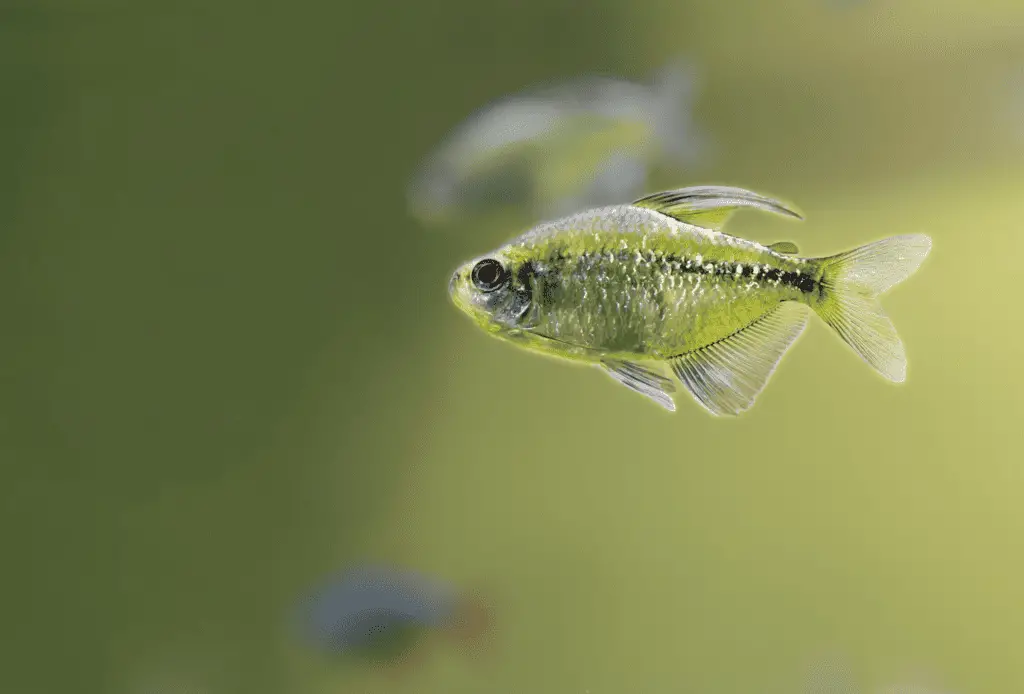
Diet and Feeding
When it comes to the diet of Diamond Tetras, they are omnivores that can thrive on a varied diet. We can provide them with a range of food sources to ensure they receive all the necessary nutrients for optimum health and growth.
One essential part of their diet is high-quality, protein-rich foods like brine shrimp, bloodworms, and daphnia. These types of live or frozen foods are particularly beneficial for Diamond Tetras as they closely resemble the insects they wouldconsume in their natural habitat.
Besides the live or frozen foods, we can also include flakes and pellets in their diet. These commercial food products are specifically formulated to provide the necessary vitamins, minerals, and protein for maintaining optimal health. It is essential to select products made for small, omnivorous fish like the Diamond Tetras.
Occasionally, incorporating some vegetable matter, like lettuce or blanched greens, can add variety to their diet and provide vital nutrients and fiber. Although Diamond Tetras are not primarily herbivores, offering some plant-based foods can contribute to a well-rounded diet.
To summarize, we can provide a diet that consists of live or frozen foods, commercial flakes and pellets, and occasional plant-based items for our Diamond Tetras. This balanced and varied feeding regimen ensures that they remain healthy, colorful, and active throughout their lives.
Breeding and Reproduction
We can effectively breed Diamond Tetras through careful observation of their sexual dimorphism. Males have longer dorsal fins and exhibit a more elongated appearance, while females display a rounder and fuller body – especially when ready to spawn.
To successfully breed Diamond Tetras, it’s essential to set up a designated breeding tank. A 10-20 gallon tank with soft, slightly acidic water will provide the ideal conditions for them. Installing ample plants (Java Moss and spawning mops) will give the potential parents a comfortable environment and shelter to lay eggs.
When selecting breeding pairs, we should choose healthy and vibrant individuals, as this will increase the likelihood of successful spawning. Diamond Tetras exhibit monogamous pairing, so they’ll typically spawn in pairs. Introduce the chosen pair into the breeding tank in the evening to promote natural spawning behavior.
A well-balanced diet, including live or frozen foods like brine shrimp, daphnia, and tubifex worms, plays a crucial role in encouraging breeding behavior. For best results, we should feed our fish a combination of these foods for a week or two before introducing them to the breeding tank.
Spawning generally occurs in the early morning hours when Diamond Tetras scatter adhesive eggs among the plants in the breeding tank. To increase the survival rate of eggs and fry, we recommend removing the parents from the breeding tank shortly after spawning, as they may consume their own eggs and fry.
After three days, viable eggs will hatch, and the fry will emerge. It’s crucial to provide adequate nourishment for the growing fry by feeding them small, easily digestible infusoria or newly hatched brine shrimp. Additionally, maintaining stable water parameters and performing regular water changes are essential to promote healthy growth and development in the offspring.
By following these guidelines, we can confidently and successfully breed Diamond Tetras, ensuring a new generation of these vibrant and elegant fish for our aquariums.
Health and Diseases
When it comes to the health of Diamond Tetras, we must pay close attention to the conditions of the tank, as well as signs of diseases and parasites. Diamond Tetras have a typical lifespan of 3-5 years when well cared for, and they are considered relatively hardy fish. To keep our Diamond Tetras healthy and thriving, we should ensure they live in an aquarium that replicates their natural habitat, with soft, acidic water and gentle currents.
One common disease among Diamond Tetras is Ich, or White Spot Disease. This parasitic infection causes white spots on the fish’s body and can be detrimental to their health. To treat Ich, we can raise the tank temperature to 86°F (30°C) for a few days and use specialized medications. Preventative measures include quarantining new fish and maintaining optimal water parameters.
Another disease to watch for is fin rot, a bacterial infection that affects the fins of Diamond Tetras. The early signs of fin rot include frayed or discolored fins. To prevent fin rot, it is essential to maintain clean water conditions and avoid overcrowding. In case of an infection, medication such as antibiotics can be used to treat the affected fish.
Diamond Tetras can also suffer from swim bladder disorders, reflected in their abnormal swimming patterns. Causes for this condition may include poor water quality, overfeeding, or injury. Lowering the water level and providing a varied diet can help to prevent swim bladder issues.
In summary, while Diamond Tetras are resilient fish, it is essential to monitor their health and maintain proper water parameters to prevent potential diseases. Our vigilance and care can go a long way in ensuring that our fish enjoy a long, healthy lifespan.
Caring for Diamond Tetras in Captivity
Diamond Tetras are a popular freshwater fish species belonging to the Moenkhausia genus. These beautiful tetras are known for their vibrant colors and schooling behavior which makes them an excellent addition to your aquarium. In this section, we will discuss the care requirements for Diamond Tetras in captivity.
When setting up an aquarium for Diamond Tetras, it is important to create a suitable environment for them. Provide a tank size of at least 20 gallons to accommodate a small school, as these tetras thrive in groups of six or more. Adequate space is essential for their schooling behavior and overall wellbeing. Ensure the tank is well-planted with a variety of aquatic plants as it provides them with cover and a place to explore.
Water quality plays a crucial role in keeping your Diamond Tetras healthy. Maintain the water temperature between 75-82°F (24-28°C), pH between 6.0 and 7.5, and a water hardness of 5-12 dGH. Performing regular water changes is crucial in maintaining the water parameters within these optimal ranges.
For feeding these fascinating tetras, we recommend offering a balanced diet that includes a combination of high-quality fish flakes and live, frozen, or freeze-dried foods. An ideal diet for Diamond Tetras consists of:
- High-quality fish flakes
- Live foods such as brine shrimp, daphnia, and mosquito larvae
- Frozen or freeze-dried foods like bloodworms, tubifex, and micro pellets
It’s important to provide a variety of food items to enhance the fish’s overall health and coloration.
Diamond Tetras are generally peaceful and can be easily kept in community tanks with other non-aggressive fish species. Their ideal tankmates include other small tetras, peaceful barbs, corydoras, and dwarf cichlids. Keep in mind that these tetras are known to be fin nippers, so avoid housing them with fish species that have long, flowing fins such as angelfish or guppies.
Breeding Diamond Tetras can be a rewarding experience if you follow the proper steps. Set up a separate breeding tank with slightly acidic water, subdued lighting, and fine-leafed plants. Increase the temperature to around 80°F (27°C) and provide the fish with a protein-rich diet. This will encourage spawning behavior, leading to eggs laid among the plants and their subsequent fertilization. The eggs will hatch within 24-36 hours, and the fry can be fed with infusoria or specially designed fry foods.
By following these guidelines, we can ensure that our Diamond Tetras have a comfortable, safe, and stimulating environment in captivity, where they will thrive and showcase their beautiful colors and intriguing schooling behavior.
Conclusion
In our experience, Diamond Tetras thrive best when provided with proper care and attention to their specific requirements. These striking, beautiful fish may be well suited to beginner and experienced fishkeepers alike, as they are known for their relatively easy care level.
Feeding Diamond Tetras a diverse diet of high-quality dry flakes, pellets, and live or frozen foods, such as brine shrimp and bloodworms, can help ensure they maintain optimal health and display vibrant colors. We recommend a well-lit aquarium to bring out the shimmering, iridescent scales that give them their name, but be mindful of not overexposing them to light, as this could cause stress.
Providing a densely planted environment closely resembling their natural habitat in the Orinoco River basin is important for Diamond Tetras. This includes a variety of vegetation like java fern and cryptocoryne, as well as foreground plants such as dwarf hairgrass to create hiding spots and promote their natural foraging behavior.
To sum up, creating a well-planned aquarium environment that emulates the Diamond Tetra’s natural habitat, offering a varied and nutritious diet, and adhering to appropriate lighting setups can lead to a thriving community of these stunning fish. With the correct care and attention, we believe the Diamond Tetra will make a captivating and rewarding addition to any aquarium.
Frequently Asked Questions
What is the ideal tank size for Diamond Tetras?
We recommend a minimum tank size of 20 gallons for Diamond Tetras. This provides enough space for them to swim and establish territories. A larger tank is preferred, especially if you plan to keep a group or combine them with other species.
How long do Diamond Tetras typically live?
Diamond Tetras have an average lifespan of 3-5 years in well-maintained aquariums. Providing proper tank conditions, a balanced diet, and good water quality can contribute to their longevity.
What is the ideal temperature for Diamond Tetra care?
The ideal temperature for Diamond Tetras lies between 72°F to 82°F (22°C to 28°C). We recommend keeping the tank water temperature steady within this range to ensure their comfort and overall health.
Are Diamond Tetras aggressive or peaceful fish?
Diamond Tetras are mostly peaceful fish. They can be slightly aggressive when establishing territories or during mating, but they usually get along well with other non-aggressive community fish.
How many Diamond Tetras should be kept together for optimal well-being?
To promote their well-being, we suggest keeping a group of at least 6-8 Diamond Tetras together. This allows them to exhibit their natural schooling behaviors and reduces stress levels.
What is the general care requirement for Diamond Tetra fry?
To raise Diamond Tetra fry, we advise separating them from adult fish to avoid predation. Feed them small, nutritious foods, like infusoria or baby brine shrimp, and maintain a stable water temperature within the ideal range. As they grow, perform regular water changes to ensure cleanliness, reduce nitrogenous waste buildup, and support healthy development.
